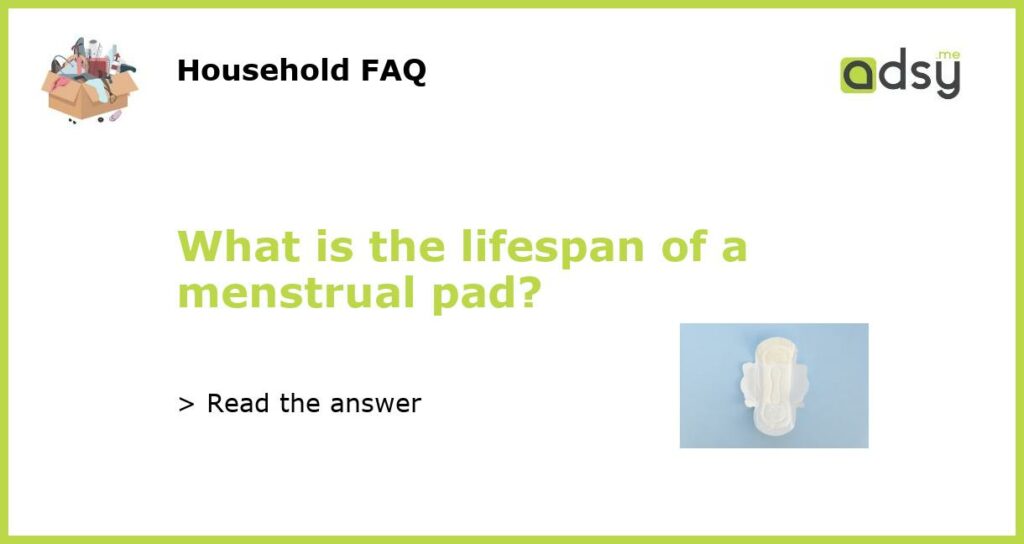The Lifespan of a Menstrual Pad
Menstrual pads are a common and essential product used by women during their menstrual cycle. They provide comfort and protection, allowing women to go about their daily activities with confidence. But have you ever wondered how long a menstrual pad lasts? In this article, we will explore the lifespan of a menstrual pad, factors that can affect its durability, and how to determine when it is time to replace it.
Understanding Menstrual Pad Lifespan
The lifespan of a menstrual pad can vary depending on several factors, such as its quality, absorbency level, and your individual flow. On average, a menstrual pad is designed to last for about 4 to 6 hours before it needs to be changed. However, this can vary depending on the brand and type of pad you are using.
It is important to note that wearing a pad for an extended period can lead to discomfort, odor, and potential health risks. Prolonged use of a pad without changing it can increase the risk of infection and irritation. Therefore, it is crucial to follow the recommended time intervals for changing your pad.
Factors Affecting Durability
Several factors can affect the durability of a menstrual pad, including its absorbency level, the quality of materials used, and the individual’s flow. Higher absorbency pads are typically more durable and can last longer before needing to be changed.
The quality of the materials used in the pad also plays a significant role in its durability. Pads made from high-quality, breathable materials are more likely to last longer and provide better comfort. Cheaper pads may be less durable and prone to leakage, which can lead to frequent changing.
Additionally, an individual’s flow can impact the lifespan of a menstrual pad. Women with heavier flows may need to change their pads more frequently compared to those with lighter flows. It is essential to choose a pad that matches your flow to ensure optimal comfort and protection.
How to Determine When to Replace a Menstrual Pad
Knowing when to replace a menstrual pad is crucial for maintaining hygiene and preventing any potential health issues. Here are a few indicators that it is time to change your pad:
1. Saturation: When a pad is fully saturated and starts to leak, it is time to replace it. Pay attention to any signs of leakage or discomfort to determine when a pad has reached its maximum absorbency.
2. Odor: If you notice a strong odor, it may be a sign that your pad needs to be changed. Menstrual blood can develop an unpleasant smell when exposed to air for an extended period.
3. Discomfort or irritation: Wearing the same pad for too long can lead to discomfort and irritation. If you start experiencing itching, rashes, or general discomfort, it is time to change your pad.
Tips for Maximizing the Lifespan of a Menstrual Pad
While the lifespan of a menstrual pad depends on various factors, there are a few tips you can follow to help maximize its durability:
1. Choose a high-quality pad: Invest in pads that are made from quality materials and have a higher absorbency level. This can help prevent leakage and minimize the need for frequent changing.
2. Change pads regularly: Follow the recommended time intervals for changing your pad. This typically ranges from every 4 to 6 hours, depending on your flow and the pad’s absorbency level.
3. Consider backup options: Utilize backup options, such as panty liners or menstrual cups, to help extend the lifespan of your menstrual pad. These can provide an extra layer of protection and prolong the time between pad changes.
4. Practice good hygiene: Maintain good hygiene by washing your hands before and after changing your pad. This can help prevent the spread of bacteria and reduce the risk of infections.
In conclusion, the lifespan of a menstrual pad can vary depending on factors such as its quality, absorbency level, and individual flow. On average, a pad is designed to last for about 4 to 6 hours before it needs to be changed. However, it is crucial to monitor its saturation, odor, and any signs of discomfort to determine when it is time for replacement. Following these guidelines and practicing good hygiene can help maximize the durability of your menstrual pad.






